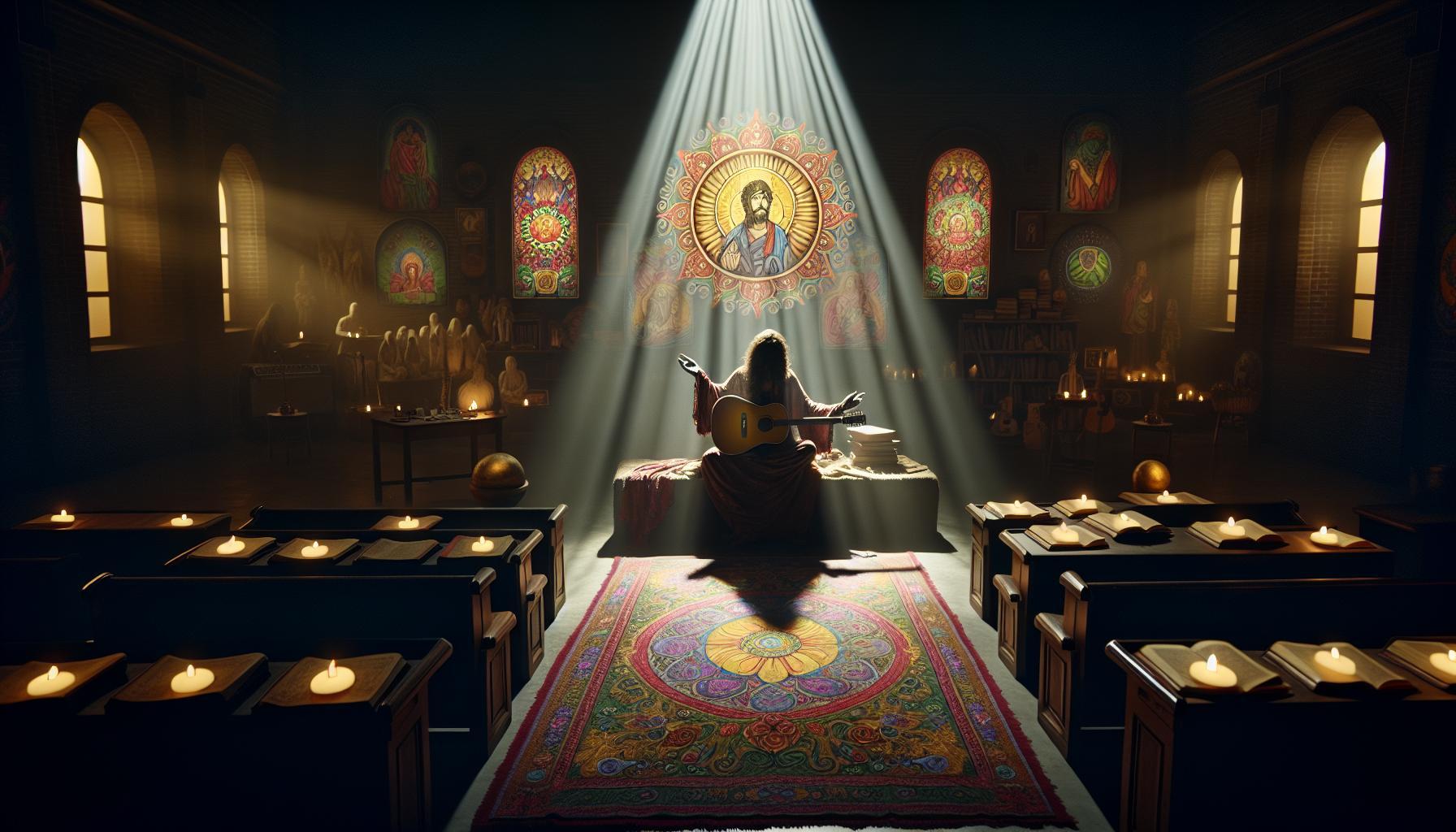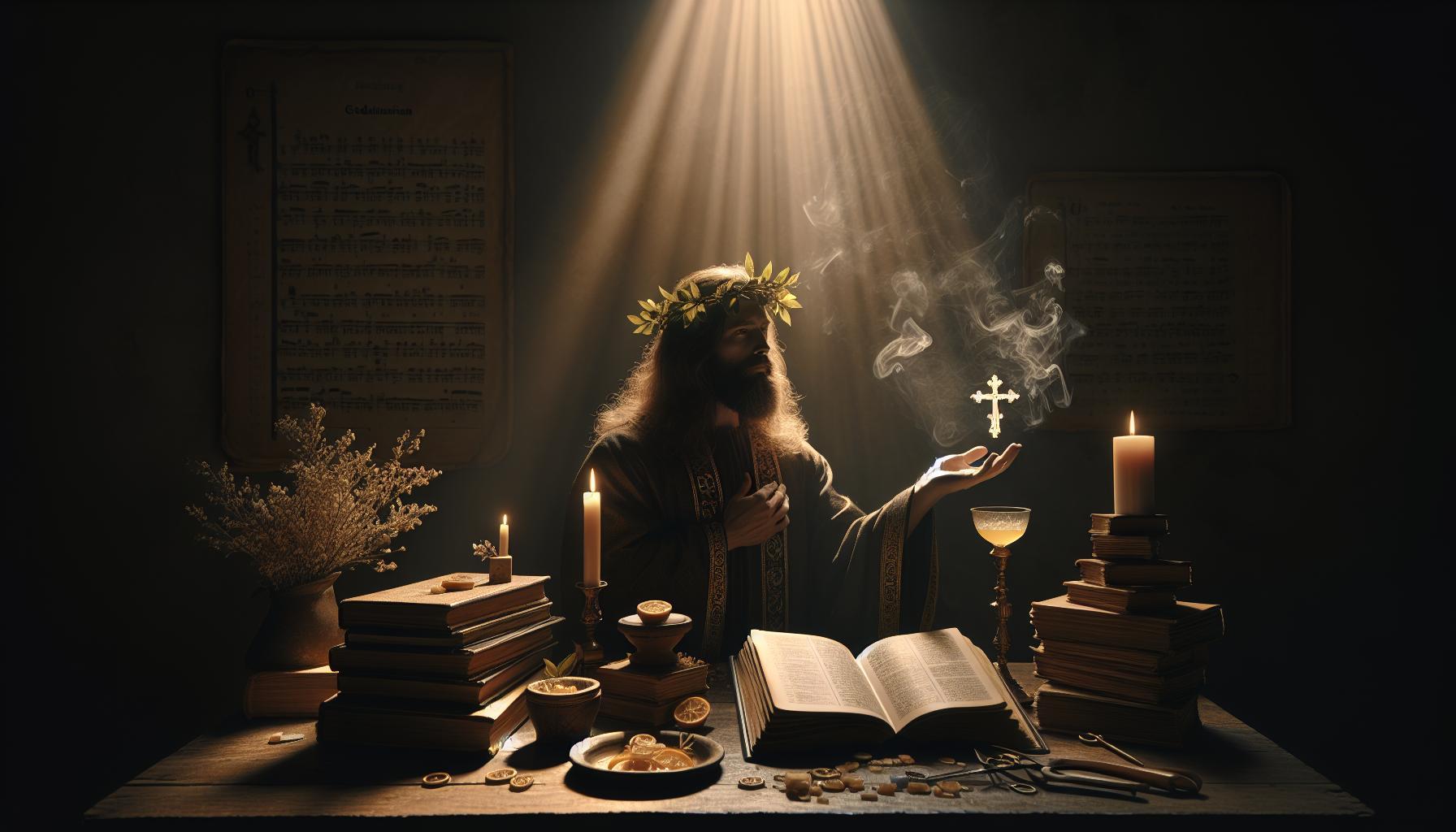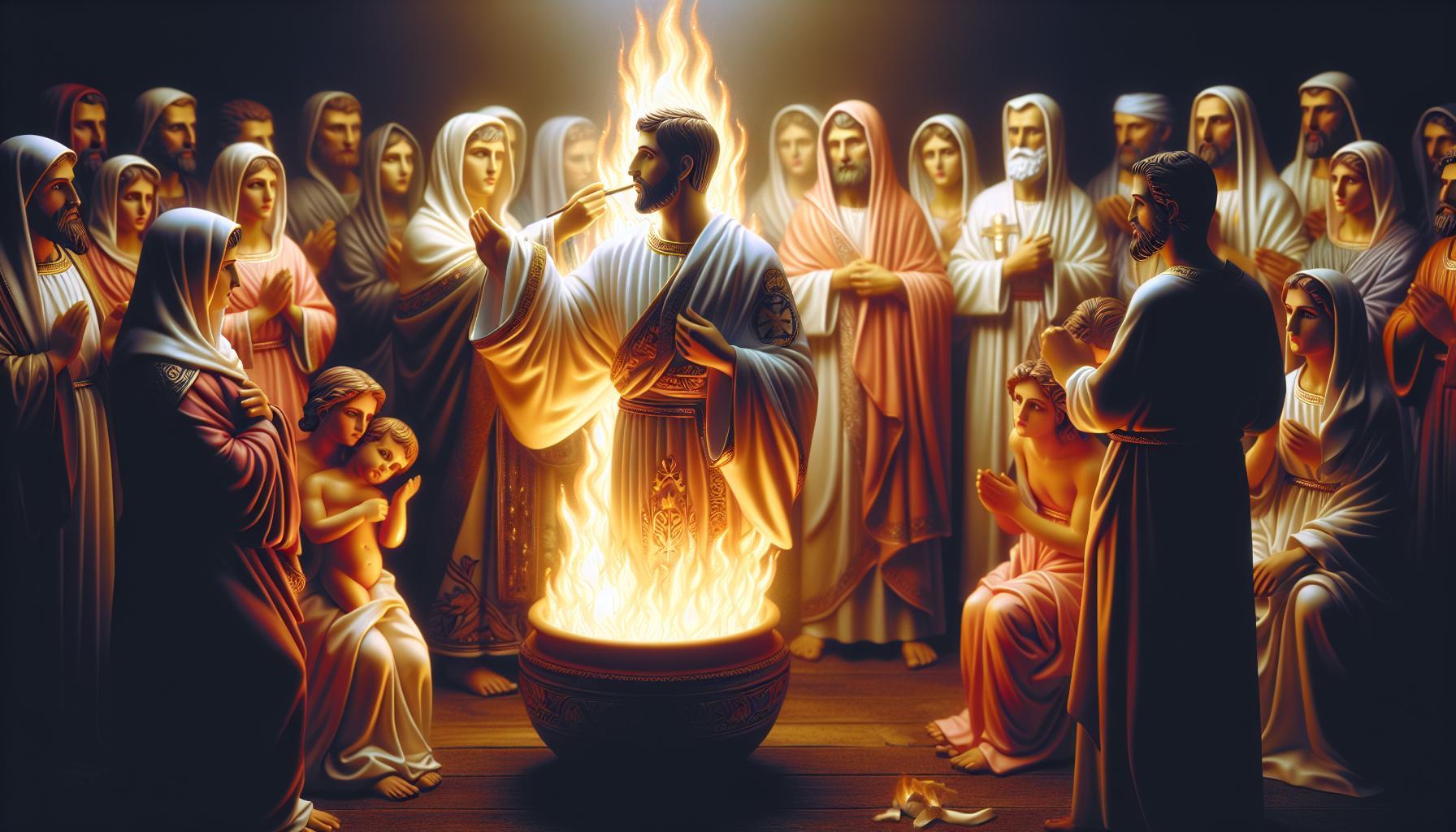Did Janis Joplin ever lend her powerful voice to the timeless classic “Son of a Preacher Man”? This question delves into the intersection of music and spirituality, exploring how artists like Joplin infused their work with themes of faith and longing. Understanding these influences not only enriches our appreciation of her artistry but also highlights the broader significance of religion in the music landscape of the 1960s.
Janis Joplin: A Voice of Rebellion and Spirituality
Janis Joplin, an iconic figure of the 1960s music scene, wielded her voice like a weapon of defiance, capturing the essence of rebellion and spirituality that resonated with a generation. Known for her raw and emotional vocal style, Joplin’s music transcended mere entertainment; it became a conduit through which her personal battles and social commentaries spilled forth. Her performances were not just concerts; they were cathartic experiences that invited her audience into a realm of deep emotional connection.
The Duality of Rebellion and Spirituality
At the core of Joplin’s artistry was a profound sense of rebellion against the societal norms of her time. She challenged the expectations placed on women and artists, continually pushing boundaries both in her personal life and musical expressions. Songs like “Piece of My Heart” and “Me and Bobby McGee” showcased her fervent desire for freedom and understanding, encapsulating themes of love, loss, and existential longing. Alongside these rebellious anthems, Joplin’s work often hinted at spiritual undertones.
Joplin explored religious themes through metaphors and lyrical narratives, drawing upon her experiences and beliefs. The interplay between spirituality and rebellion is evident when we consider her interpretation of spiritual lyrics seen in various folk and rock pieces. Even though she did not perform “Son of a Preacher Man,” her influence and thematic parallels can be closely linked to the song’s exploration of morality, love, and the complexities of faith.
Real-World Reflections
In many ways, Joplin’s life mirrored the struggles of the time; a search for meaning in a world rife with disillusionment. Her ability to channel her spirituality through wildness and vulnerability made her relatable to her audience. Fans often found solace in her music during turbulent times, illustrating the powerful connection between a personal journey and communal experience.
To immerse oneself in Joplin’s world, consider the following steps:
- Listen to her discography carefully, paying attention to the lyrics for religious themes and personal reflections.
- Attend tribute shows or exhibitions dedicated to her life, often exploring the intricacies of her relationships and beliefs.
- Explore literature or documentaries about Joplin, delving into how her rebellious spirit influenced many aspects of the counterculture movement.
In doing so, one can appreciate how Janis Joplin’s voice was not just that of a rock and blues singer, but also a profound expression of a young woman grappling with the complex intersections of rebellion and spirituality, inviting her listeners to join in her quest for connection and understanding.
Analyzing “Son of a Preacher Man”: Themes of Faith and Heartbreak
The intersection of faith and heartbreak in music often resonates deeply with listeners, and “Son of a Preacher Man” serves as a quintessential example of this duality. The song, while sonically captivating, delves into themes of love shaped by religious backgrounds and the emotional scars that often come with them. Through its narrative, the song captures the passion and tumult of a forbidden romance, where the weight of religious expectation collides with the longing for connection. The protagonist’s affection for the preacher’s son is imbued with a sense of sacredness and taboo, reflecting how love can often challenge societal norms grounded in faith.
As listeners explore these themes, they may find parallels in their own lives, recognizing the conflict between desire and duty. The emotionally charged lyrics highlight the hesitations and regrets that accompany such relationships, making it relatable to anyone who has navigated the complexities of love intertwined with societal or familial expectations. This relatable emotional landscape elevates the song beyond mere storytelling, inviting audiences to reflect on their own experiences of love and loss. By weaving in elements of spirituality, the song becomes a broader commentary on how faith can influence personal relationships, often creating emotional turmoil.
Religious Undertones
The song’s religious undertones serve as a backdrop against which the romantic tension unfolds. The imagery associated with preachers and belief introduces a dichotomy where love is both a divine gift and a source of inner conflict. Here are some themes that stand out in this context:
- Spiritual Conflict: The interplay between romantic love and religious values highlights the struggle individuals face when their desires contradict their upbringing.
- Redemption and Forgiveness: The yearning for reconciliation signifies a deeper search for forgiveness—both from oneself and from a higher power.
- Taboo Relationships: The sacred vs. profane dichotomy raises questions about societal acceptance of love that defies traditional boundaries.
The emotional depth of “Son of a Preacher Man” is further amplified when considering Janis Joplin’s powerful vocal delivery, which can evoke profound feelings of vulnerability and strength. Though she did not originally record this song, her covers of various emotionally charged tracks reflect her ability to convey complex themes of heartache and resilience, making the exploration of faith and relationships in music vividly relatable. Through her interpretations of music steeped in spiritual themes, audiences can gain insight into how these elements not only inform personal narratives but also resonate within the collective consciousness of a generation grappling with similar conflicts.
The Intersection of Music and Religion: A Historical Perspective
Music has long served as a bridge between the sacred and the secular, acting as a powerful medium for expressing humanity’s deepest spiritual yearnings. Throughout history, various cultures have infused their musical traditions with religious themes, creating a symbiotic relationship where the two disciplines enhance and reflect one another. The exploration of religious themes in music reaches back to the dawn of civilization, with early chants and hymns serving as intrinsic parts of worship practices.
The Role of Spirituality in Musical Traditions
Spiritual beliefs have significantly shaped musical styles and genres worldwide. Across diverse cultures, music has often been used in religious settings for rituals, ceremonies, and rites of passage. Some key examples include:
- Gregorian Chant: These monophonic, unaccompanied sacred songs of the Roman Catholic Church set a meditative tone for worship.
- Gospel Music: Emerging from African American religious traditions, gospel music combines sacred lyrics with rich, emotional melodies, expressing faith and community.
- Sufi Whirling: This practice, accompanied by music, is central to Islamic mysticism and serves as a form of devotion and connection with the divine.
Each of these traditions illustrates not only a reflection of religious belief but also how music can be a vehicle for conveying profound spiritual truths and experiences. The resonance between music and faith creates a unique narrative that has transcended time and geography.
Modern Interpretations and References in Popular Music
In contemporary music, artists like Janis Joplin have continued to explore these profound themes by incorporating elements of spirituality into their work. The song “Son of a Preacher Man” resonates deeply with many listeners with its rich storytelling and layered meanings. While Joplin may not have directly sung “Son of a Preacher Man,” the infusion of spiritual themes within her repertoire has left an indelible mark. Contemporary songs often reflect struggles with faith, redemption, and the search for meaning—echoing similar motifs found in historical religious music.
For instance, consider how modern artists, both secular and religious, tackle themes of redemption and spiritual searching. Here are some notable examples:
| Artist | Song | Themes |
|---|---|---|
| Katy Perry | “Unconditional” | Love and acceptance |
| Chance the Rapper | “Blessings” | Faith and gratitude |
| Bob Dylan | “Every Grain of Sand” | Reflection and spirituality |
The interweaving of religious themes within popular music invites listeners into a space where faith and personal experiences intermingle, allowing for a rich tapestry of interpretation and emotional engagement. Such trends reinforce the idea that music, like religion, is a universal language shaped by the human experience, emphasizing how deeply intertwined these two realms truly are.
Exploring the Role of Preachers in Popular Music
The influence of preachers and religious themes in popular music is a fascinating phenomenon, often weaving stories of love, loss, and redemption that resonate deeply with listeners. From gospel-infused rock to bluesy ballads, the thematic presence of spirituality reflects a complex relationship between faith and art. Artists like Janis Joplin, though connected to secular expressions of music, carried echoes of their spiritual roots into the mainstream, compelling audiences to ponder the moral implications behind their lyrics.
The Spiritual Legacy of Music Iconography
Numerous artists have drawn upon their religious backgrounds, crafting narratives that invite comparisons to biblical themes and figures. Janis Joplin, celebrated for her powerful vocal delivery and emotive phrasing, paradoxically mirrors aspects of the preacher’s message. Some tracks, such as “Son of a Preacher Man,” speak to multi-layered relationships that offer a critique of societal norms while still respecting the heritage of the church.
- Emotional Resonance: Many gospel songs emphasize themes of suffering and salvation, much like the narratives found in rock and blues. These emotional expressions transcend the church, inviting a broader audience to engage with spiritual concepts.
- Cultural Commentary: Songs often reflect societal issues, from civil rights to personal liberation. Joplin’s music not only showcased her personal struggles but also echoed the collective voice of a generation yearning for change.
- Cross-Genre Influence: The melding of gospel influences into rock and pop has created a vibrant tapestry that enriches the musical landscape, showcasing how religious themes can be both uplifting and provocative.
Real-World Examples of Preacher Influence
The role of the preacher in popular music can be best understood through various artists who have incorporated such themes into their work. For instance, the legendary Bob Dylan often evokes spiritual imagery, drawing heavily from his Jewish upbringing and the Christian themes he encountered throughout his life. Similarly, artists such as Aretha Franklin and Sam Cooke brought gospel elements into R&B, elevating the musical experience while addressing critical social issues.
| Artist | Notable Song | Religious Theme |
|---|---|---|
| Janis Joplin | Son of a Preacher Man | Love and sin |
| Bob Dylan | Knockin’ on Heaven’s Door | Death and redemption |
| Aretha Franklin | Respect | Dignity and worth |
| Sam Cooke | A Change Is Gonna Come | Hope and social justice |
These artists exemplify the spectrum of how music can reflect and engage with religious themes deeply ingrained in society. The legacy of preachers in shaping popular music not only provides a historical context but also highlights the enduring power of faith in storytelling through song. Such connections encourage listeners to explore their own spiritual journeys through the lens of music, paving the way for deeper understanding and reflection.
How Secular Artists Reflect Spiritual Struggles
The interplay between secular music and spiritual themes is a fascinating realm where artists often wrestle with their inner conflicts and existential questions. Janis Joplin, renowned for her powerful voice and emotional depth, encapsulated these struggles within her music, although she never sang “Son of a Preacher Man.” Instead, the theme of spirituality in her work resonates with the broader context of music that explores religious and existential themes. This reflection of spiritual struggles can be seen across various genres and artists, revealing a universal quest for meaning and connection.
The Inner Turmoil of Secular Artists
Many secular musicians confront their spiritual dilemmas through their craft, often blending personal experiences with thematic explorations of faith, doubt, and redemption. Such artistic expressions provide listeners with a lens through which to perceive their own struggles, thereby forming a deep emotional connection. Here are some key ways in which these artists reflect their spiritual battles:
- Lyricism: Lyrics often serve as a poetical exploration of faith, questioning societal norms and personal beliefs. For instance, in Joplin’s other works, one can sense a longing for connection accompanied by a disenchantment with traditional religious structures.
- Musical Composition: The tonal qualities and instrumentation in secular music frequently mirror the artist’s tumultuous feelings, using dissonance to express doubt or yearning. This can be likened to the blues genre, where artists like Joplin channeled their pain into emotionally charged performances.
- Public Persona: The image artists project often reflects a duality of sacred and profane, illustrated by contrasting lifestyles or aesthetic choices that grapple with societal expectations versus personal desires.
Real-World Examples of Spiritual Reflection
Many notable musicians have skillfully crafted their narratives around faith and questioning, mirroring the struggles within Joplin’s oeuvre. Here are a few examples that exemplify this connection:
| Artist | Notable Work | Spiritual Theme |
|---|---|---|
| Bob Dylan | “Knockin’ on Heaven’s Door” | Existential inquiry about mortality and redemption |
| Leonard Cohen | “Hallelujah” | Struggles with faith and the complexity of love |
| Prince | “One Nite Alone” | Exploration of spirituality and personal awakening |
These artists, like Joplin, intertwine their experiences of love, loss, and longing with spiritual themes, demonstrating that secular music can be a powerful vehicle for addressing deep-rooted spiritual struggles. Through their work, they invite listeners to reflect on their own journeys, offering healing and connection across the divides of faith and doubt. The exploration of such themes showcases the rich tapestry of music and the profound search for understanding in the human experience.
The Power of Gospel Influences in Rock and Blues
The roots of rock and blues music are deeply intertwined with gospel influences, a relationship that has shaped the sound and spirit of these genres since their inception. One only has to listen to the soulful cries of artists like Janis Joplin to feel the reverberations of gospel in her music, particularly in tracks like “Son of a Preacher Man.” The truth is that gospel music’s emotive storytelling and powerful vocal delivery have found a fertile ground in the rock and blues traditions, allowing them to flourish and evolve.
The Essence of Gospel in Rock and Blues
Gospel music is characterized by its rich harmonies, emotional narratives, and uplifting themes, all of which resonate within the frameworks of rock and blues. These genres have often mirrored the gospel tradition, shifting from the sacred to the secular while still echoing sentiments of faith, struggle, and redemption. Many rock and blues artists have drawn heavily upon gospel rhythms and vocal techniques, blending them with bluesy licks and rock riffs to create a sound that is both timeless and contemporary.
- Vocal Techniques: The use of call-and-response patterns, emotive belting, and nuanced phrasing found in gospel has become a staple in the performances of iconic rock and blues singers.
- Lyric Themes: Lyrics often traverse dimensions of spirituality, exploring themes of heartbreak, salvation, and morality, much like the messages often conveyed in gospel songs.
- Instrumentation: Gospel’s use of piano, organ, and brass has translated into the rock and blues idioms, driving the emotional intensity and enhancing the overall impact of the music.
Examples of Gospel Influence in Iconic Tracks
Numerous tracks illustrate the profound connection between gospel music and rock or blues. For instance, Joplin’s engagement with gospel-themed melodies is evident in her powerful rendition of “Son of a Preacher Man.” This song encapsulates themes of longing and fate against a backdrop of gospel-infused rhythms. Other artists, like Aretha Franklin and Ray Charles, have similarly showcased how gospel can bridge personal expression and broader social commentary.
| Artist | Song | Gospel Elements |
|---|---|---|
| Janis Joplin | Son of a Preacher Man | Emotional delivery, narrative depth |
| Aretha Franklin | Respect | Call-and-response, vocal improvisation |
| Ray Charles | What’d I Say | Riffing patterns, piano-driven grooves |
This essential fusion of genres creates a powerful narrative framework that can explore both individual and communal experiences. By recognizing and celebrating the gospel influences in rock and blues, listeners can deepen their appreciation for how these musical forms convey profound emotions and reflect cultural heritage. The question “Did Janis Joplin Sing Son of a Preacher Man: Music’s Religious Themes?” illustrates this critical intersection where faith and music collide, driving both personal expression and broader societal narratives.
Understanding the Universal Appeal of Religious Themes in Music
Music serves as a universal language, weaving a tapestry of emotions, experiences, and ideas that resonate across cultures and generations. Among its countless themes, the exploration of religious motifs stands out as particularly powerful and enduring. This is evident not only in traditional sacred sounds but also in the striking works of artists like Janis Joplin, whose songs frequently echo religious sentiments and narratives, despite the question “Did Janis Joplin Sing Son of a Preacher Man: Music’s Religious Themes” often arising in discussions of her repertoire.
The Connection between Music and Faith
One reason for the widespread appeal of religious themes in music is their innate capability to evoke deep emotional responses. The concepts of love, redemption, morality, and spiritual struggle resonate with listeners of all backgrounds. When artists infuse their work with such themes, they create a bridge between personal experience and collective spirituality. Here’s how this connection manifests:
- Personal Reflection: Many songs deal with the struggles of faith, doubt, and resilience, allowing listeners to reflect on their own spiritual journeys.
- Community and Belonging: Musical expressions of shared beliefs can foster a sense of belonging, making the listeners feel part of a larger narrative.
- Emotional Release: The cathartic power of music serves as an outlet for grief, joy, and revelation, often framed within a religious context.
Religious Imagery Across Genres
The incorporation of religious themes is not limited to any single genre. From the soul-stirring hymns found in gospel music to the rock anthems of the 60s and 70s, religious imagery permeates diverse musical styles. Notably, artists like Joplin, known for her raw emotion, often weave religious elements into their narratives, echoing a spiritual quest despite life’s complexities.
Table: Examples of Religious Themes in Popular Music
| Artist | Song Title | Religious Theme |
|---|---|---|
| Janis Joplin | Me and Bobby McGee | Freedom and Redemption |
| Bob Dylan | All Along the Watchtower | Prophecy and Revelation |
| The Clash | Redemption Song | Freedom and Liberation |
Through this exploration, it’s clear that the inquiry surrounding Janis Joplin and her potential connection to the question of “Did Janis Joplin Sing Son of a Preacher Man: Music’s Religious Themes” highlights a larger narrative. It illustrates how music speaks to the shared human experience, not just in terms of individual journeys but also in the broader context of faith and spirituality. The religious undertones in Joplin’s music reflect a quest for understanding and connection, inviting listeners to engage with their own beliefs and experiences.
From the Pulpit to the Stage: The Cultural Significance of Music in Worship
The interplay between music and worship has been a powerful conduit of expression and spirituality throughout history, drawing a vivid line from the sacred spaces of religious ceremonies to the intimate setting of personal concerts. Janis Joplin, a voice that resonated with the anxieties and passions of her generation, often brought elements of her Southern roots and expressive emotional honesty to her performances. The song “Son of a Preacher Man” encapsulates this synthesis, highlighting not just the narrative of forbidden love but also the cultural tapestry interwoven with themes of faith, longing, and societal pressures. This intersection of music and spirituality is where the essence of cultural significance thrives, shaping both individual lives and communal identities.
The Role of Music in Worship
Music serves as a bridge in worship, connecting congregants to a higher power while also reinforcing communal bonds. The rhythmic patterns and melodies employed in hymns and spirituals often evoke deep emotional responses, akin to the effect seen in Joplin’s passionate performances. Engaging with music in a worship setting can manifest in various forms such as:
- Hymns: Musical expressions that depict faith-based narratives, often drawing from scriptural texts.
- Spirituals: Songs that emerged from the African American experience of slavery, rich with both sorrow and hope.
- Contemporary Praise: Modern interpretations that seek to resonate with today’s audiences through relatable themes and sounds.
As observed in the cultural significance of songs like “Son of a Preacher Man,” music can filter complex emotions and narratives, making them accessible and relatable. This embodiment of faith in a musical context provides not just an outlet for worship but a vibrant way to explore deeper messages of love, hope, and resilience.
Impact on Community Identity
Worship music has the unique ability to create a shared experience that strengthens community identity. In congregations, the collective act of singing or listening to music fosters a sense of belonging and shared purpose. This phenomenon mirrors Joplin’s own performances, where her music became a rallying point for fans navigating the turbulent cultural landscape of the 1960s and 70s. Through communal singing, individuals participate in a ritual that reinforces their beliefs and cultural narratives.
The themes present in songs like “Did Janis Joplin Sing Son of a Preacher Man: Music’s Religious Themes” allow for discussions surrounding morality, love, and rebellion. These topics transcend individual interpretation, encouraging a communal exploration of belief systems within musical contexts. By examining the relationships between the music played in worship and the societal themes it addresses, we can gain insight into the ongoing relevance of these artistic expressions in contemporary worship practices.
Incorporating Music into Worship
For those looking to enhance the experience of worship through music, consider these actionable steps:
- Integrate Diverse Musical Styles: Incorporate genres that resonate with diverse congregational demographics—traditional hymns, gospel, contemporary Christian music, and even secular songs with relevant themes.
- Create a Thematic Playlist: Curate music that reflects the themes of upcoming sermons or seasonal liturgies, providing a cohesive experience.
- Encourage Participation: Engage the congregation in singing, either during services or through community events, to build a sense of unity.
By drawing on the lessons learned from artists like Janis Joplin and the cultural significance of music in worship, congregations can cultivate an environment where spiritual expression flourishes, creating moments that continue to resonate long after the final chord is played.
FAQ
Did Janis Joplin Sing Son of a Preacher Man?
No, Janis Joplin did not sing “Son of a Preacher Man.” This song was famously performed by Dusty Springfield. However, Joplin’s music frequently explored themes that resonate with spirituality and personal struggles.
Joplin’s emotional delivery and authentic connection to her songs often touched on religious undertones, reflecting her tumultuous experiences. Her unique approach presents a blend of rock, blues, and elements of folk, allowing her to convey deep sentiments that connect with listeners.
For insights into Joplin’s impactful themes, you can explore our section on musical influences in the 1960s.
What are the religious themes in Joplin’s music?
Joplin’s music often reflects themes of redemption, struggle, and soul searching. Her songs can be seen as a quest for understanding and meaning, which resonates with many spiritual journeys.
Tracks like “Me and Bobby McGee” and “Take Another Little Piece of My Heart” delve into personal strife and a yearning for connection, embodying a kind of spiritual wrestling that many relate to. These themes highlight the universal search for purpose and belonging.
Why does music often feature religious themes?
Music often features religious themes because it serves as a medium for expressing deep emotional experiences and spiritual beliefs. Artists like Joplin channel their life experiences into music, making them relatable to many.
Whether through lyrics that confront personal demons or melodies that evoke a sense of transcendence, music provides a platform for diverse expressions of faith, doubt, and hope. It resonates on a human level, inviting listeners to reflect on their own spiritual paths.
Can I find connections between Joplin’s music and other artists?
Yes, many artists share similar spiritual and emotional themes with Joplin, such as Bob Dylan and Aretha Franklin. Their music often explores the complexities of life, suffering, and hope, reflecting the human condition.
For example, Bob Dylan’s lyrics frequently intertwine spiritual references with social themes, while Aretha Franklin’s gospel background infuses her work with powerful religious sentiments. This interconnectedness highlights how music can explore and represent shared human experiences.
Why is “Son of a Preacher Man” significant in music history?
“Son of a Preacher Man” is significant for its blend of soul and pop music, capturing the essence of the 1960s. Written by Burt Bacharach and Hal David, it became a staple in expressing themes of love and longing.
The song’s narrative explores the connection between religious upbringing and romantic desire, making it relatable and poignant. Its unique arrangement and heartfelt delivery have solidified its status in music history, inspiring many reinterpretations and covering in various genres.
What other songs explore similar themes as Joplin’s music?
Many songs explore themes reminiscent of Joplin’s work, including “Hallelujah” by Leonard Cohen and “A Change Is Gonna Come” by Sam Cooke. These tracks delve into personal and societal struggles while maintaining a spiritual essence.
Both songs exhibit a profound exploration of hope, pain, and resilience, echoing Joplin’s own trials and triumphs. They capture a sense of longing for understanding and connection, reflecting the wider human experience across various contexts.
How did Janis Joplin influence modern music?
Janis Joplin influenced modern music by paving the way for female artists in rock and blues, showcasing raw emotional vocal delivery and profound storytelling. Her fearless authenticity resonates with contemporary musicians and remains an enduring inspiration.
Her style encouraged artists to express vulnerability in their work, bridging gaps across genres. Joplin’s impact is evident in the works of today’s artists, from rock to pop, who embrace a similar approach to emotional expression and musical authenticity.
In Retrospect
In conclusion, the song “Son of a Preacher Man” serves as a profound intersection of music and spirituality, mirroring the complexities of faith and personal experience. Janis Joplin’s soulful interpretation transcends mere performance, inviting listeners to explore the deeper religious themes woven throughout its lyrics. As we reflect on the convergence of music and the sacred, we recognize how these art forms can illuminate our understanding of spiritual narratives, regardless of our individual backgrounds.
Whether you’re drawn to the theological implications of faith conveyed through song or seeking meaningful ways to engage with your own spiritual journey, we encourage you to delve deeper. Explore the influences of music on religious expression and consider how these themes resonate within your own life. We invite you to participate in conversations and community discussions that honor diverse perspectives while fostering a collective appreciation for the role of music in worship and personal reflection.
Embrace the journey of discovery—listen deeply, ponder thoughtfully, and let the melodies guide you toward a richer understanding of the sacred connections in your life and community. Your experience with music and faith is unique and valuable; we encourage you to share your insights and stories as we collectively explore the resonant echoes of the divine.





